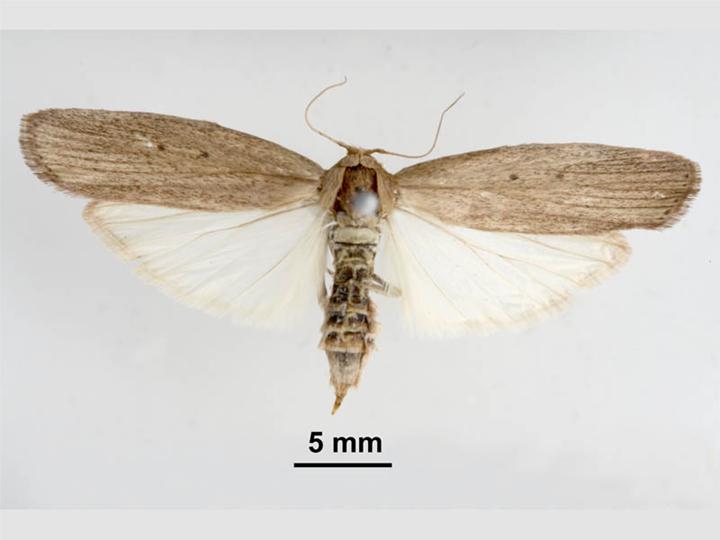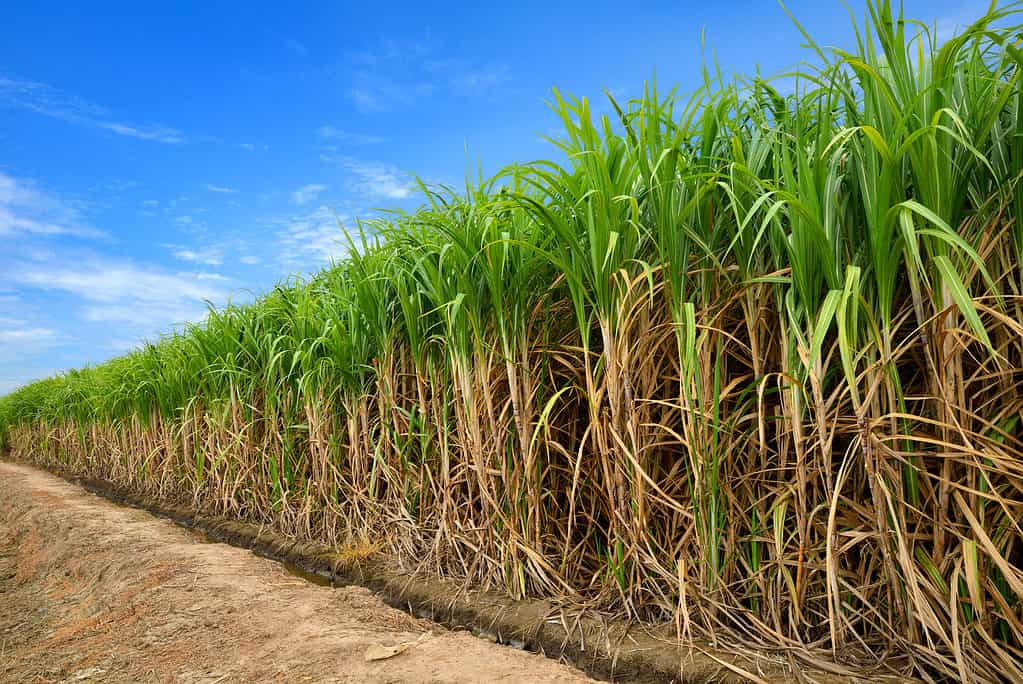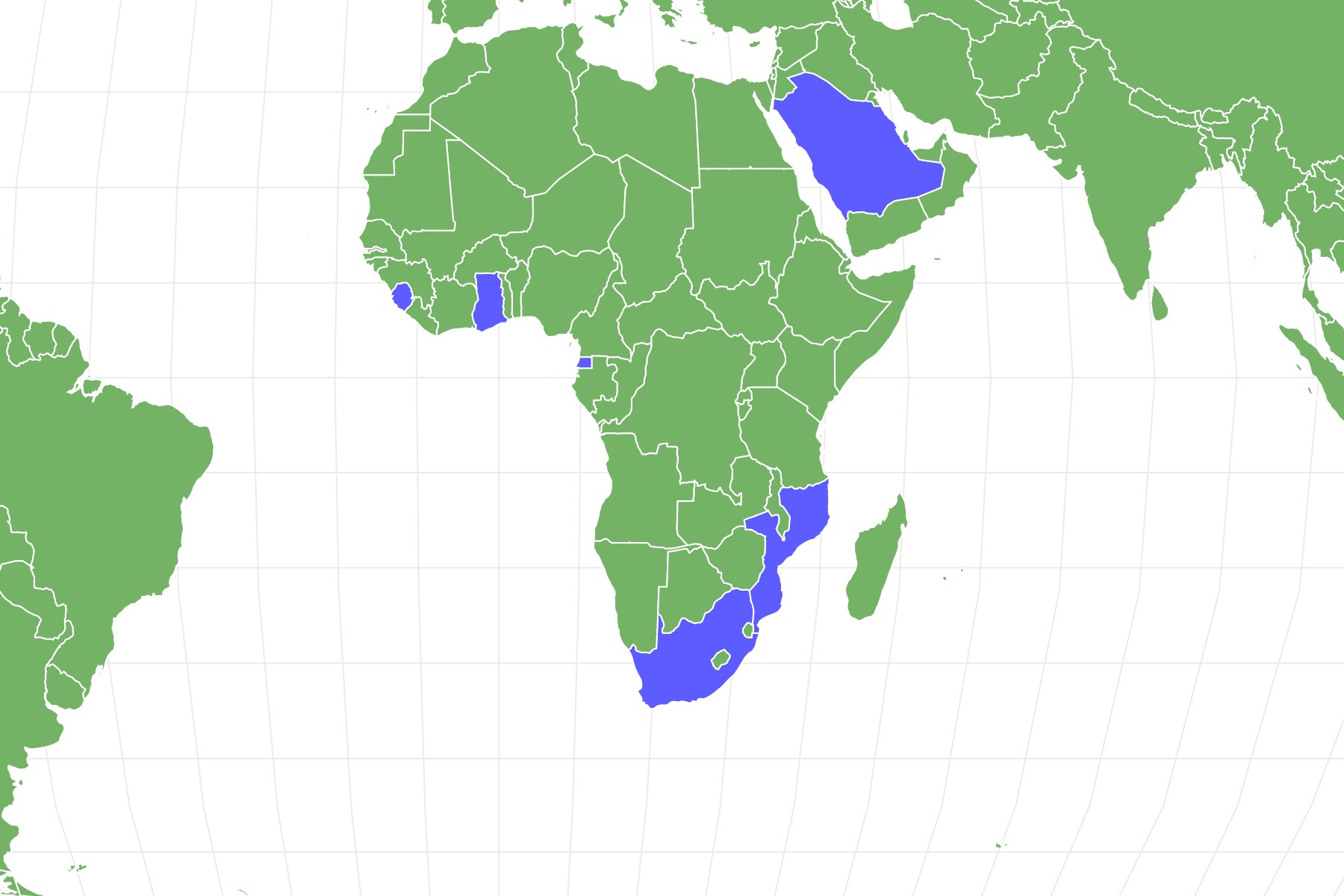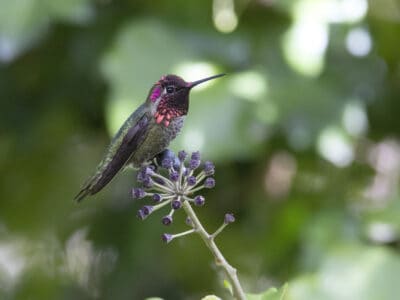The African sugarcane borer can cause significant damage to sugarcane crops by weakening the stalks, reducing the amount of sugar that can be harvested, and increasing the risk of lodging (stalks breaking and falling over).
Advertisement
African Sugarcane Borer Scientific Classification
- Kingdom
- Animalia
- Phylum
- Arthropoda
- Class
- Insecta
- Order
- Lepidoptera
- Family
- Pyralidae
- Genus
- Eldana
- Scientific Name
- Eldana saccharina
Read our Complete Guide to Classification of Animals.
African Sugarcane Borer Conservation Status
African Sugarcane Borer Facts
- Prey
- Plants in the Poaceae family
- Main Prey
- sugarcane
- Name Of Young
- larvae
- Group Behavior
- Solitary
- Fun Fact
- The African sugarcane borer can cause significant damage to sugarcane crops by weakening the stalks, reducing the amount of sugar that can be harvested, and increasing the risk of lodging (stalks breaking and falling over).
- Estimated Population Size
- Undetermined
- Biggest Threat
- Pesticides
- Most Distinctive Feature
- Their forewings are brown with two small but distinct darker brown dots in the center of each wing.
- Distinctive Feature
- Their hindwings are creamy-white with fringe and tan veins running their length.
- Other Name(s)
- African sugarcane stem borer
- Gestation Period
- 5-7 days
- Temperament
- docile
- Wingspan
- 1.4 inches
- Training
- N/A
- Optimum pH Level
- N/A
- Incubation Period
- 5-7 days
- Age Of Independence
- Emergence
- Age Of Fledgling
- Emergence
- Average Spawn Size
- 50-300
- Litter Size
- N/A
- Habitat
- sugarcane fields
- Predators
- Wasps, ants, beetles, spiders, ladtbugs
- Diet
- Herbivore
- Lifestyle
- Nocturnal
- Favorite Food
- sugarcane
- Type
- Eldana saccharina
- Common Name
- Africa sugarcane borer
- Special Features
- Ability to sabotage sugarcane fields.
- Origin
- Africa
- Number Of Species
- 1
- Location
- Africa, Western Asia
- Average Clutch Size
- 245
- Slogan
- N/A
- Group
- eclipse
- Nesting Location
- sugarcane canopy
- Age of Molting
- various times throughout larval stage
African Sugarcane Borer Physical Characteristics
- Color
- Brown
- White
- Tan
- Dark Brown
- Cream
- Skin Type
- Exoskeleton
- Lifespan
- 6 weeks-1 year
- Weight
- less than 1 ounce
- Height
- 0.2 inches
- Length
- 0.5 inches
- Age of Sexual Maturity
- 1-3 days post emergence
- Age of Weaning
- N/A
- Venomous
- No
- Aggression
- Low
View all of the African Sugarcane Borer images!
The African sugarcane borer (Eldana saccharina) is a moth in a league of its own, or more precisely, a genus of its own! Eldana saccharina is the sole species in the genus Eldana. It is a destructive pest that poses a significant threat to sugarcane production in Africa. The larvae of this insect bore into sugarcane stalks, causing significant damage to crops and reducing yields. These moths are particularly difficult pests to manage due to their resistance to many common pesticides. This presents a significant challenge to farmers and scientists alike, as they work to develop effective control measures that will mitigate the economic impact of Eldana saccharina. Keep reading as we explore the appearance, behavior, habitat, and diet of the African sugarcane borer. We’ll also learn about this pernicious pest’s predators and threats and its impact on sugarcane production.
Five Facts about African Sugarcane Borers
- Range: The African sugarcane borer is native to sub-Saharan Africa, but it has been introduced to Western Asia
- Life Cycle: The African sugarcane borer has a complex life cycle that involves several stages. The eggs are laid on sugarcane stalks, and the larvae bore into the stalks and feed on the plant tissue. The larvae then pupate inside the stalks before emerging as adult moths.
- Damage: The African sugarcane borer can cause significant damage to sugarcane crops by weakening the stalks, reducing the amount of sugar that can be harvested, and increasing the risk of lodging (stalks breaking and falling over).
- Host Plants: The African sugarcane borer primarily feeds on sugarcane, but it can also infest other grasses, including sorghum and maize.
Scientific Name
The scientific name of the African sugarcane borer, Eldana saccharina is Latin. The word Eldana does not have a specific meaning in English. The genus name was likely derived from a combination of Latin and Greek roots, but its etymology is not widely understood or documented. The second part of the name, saccharina, comes from the Latin word saccharum, which means sugar. This is because the African sugarcane borer primarily feeds on sugarcane, a crop that is known for its high sugar content.
African Sugarcane Borer: Appearance
With 0.5 inch (12 mm) long abdomens and wingspans of 1.4 inches (35mm), adult Eldana saccharina is a smaller species of moth. The forewings are brown with two small but distinct darker brown dots in the center of each wing. Their hindwings are creamy-white with fringe and tan veins running their length. Females and males of the species look very similar, though females are larger.

The African sugarcane borer’s forewings are brown with two small but distinct darker brown dots in the center of each wing.
©Ken Walker, Museum Victoria, CC BY 3.0 AU – License
Behavior
The African sugarcane borer is notorious for its destruction of sugarcane crops. The adult moths are nocturnal and are attracted to sugarcane fields. They lay their eggs on the surface of the sugarcane stalks. When the larvae hatch they bore into the stalks to feed on the inner plant tissue. This weakens the stalk and reduces the amount of sugarcane that can be harvested. This results in significant economic losses for sugarcane farmers from the reduced yield. The larvae bore into the stalks, creating tunnels that are often difficult to see from the outside, escaping control measures. African sugarcane borers do not exhibit aggressive behavior towards humans. The African sugarcane borer generally tries to avoid contact with potential threats.
African sugarcane borers communicate using ultrasound emitted through their tymbal, primarily for mating and territory defense. The tymbal is a specialized structure found in many insects, which acts as an acoustic organ to produce and detect sound. Male African sugarcane borers use their tymbal to produce a characteristic ultrasound song that attracts females but repels other males. The females, in turn, can use their own tymbal to produce sounds that communicate their receptivity to mating. Both males and females use ultrasound to locate potential food sources and to navigate in their environment. The ability to communicate through ultrasound provides African sugarcane borers with a crucial means of survival and reproduction.
African Sugarcane Borer: Habitat
The insect is native to sub-Saharan Africa, where it exists in regions with warm, humid climates. However, the African sugarcane borer is now in Western Asia, principally Saudi Arabia, where its larvae infest sugarcane and other grass crops. In sugarcane fields, the African sugarcane borer larvae bore into the stalks to feed and complete their development, causing damage to the crop. The larvae prefer to feed on young, succulent stalks, and they can bore into the stalks at any point, from the base to the tip. The larvae also create tunnels and galleries inside the stalks, which can increase the risk of lodging, or the breaking and falling of sugarcane stalks.
Besides sugarcane fields, the African sugarcane borer infests other grass crops, such as sorghum and maize. The insect’s ability to feed on multiple host plants can increase the difficulty of managing the pest and controlling its spread.

African sugarcane borers are specialist feeders with a strong preference for sugarcane.
©Photoongraphy/Shutterstock.com
Diet
African sugarcane borers are specialist feeders, with a strong preference for sugarcane. The larvae of the African sugarcane borer are adapted to bore into the sugarcane stalks and feed on the inner plant tissue, which provides them with the necessary nutrients to complete their development.
However, while these moths are specialist feeders of sugarcane, they can also feed on other grass crops, such as sorghum and maize. This indicates that they have a certain degree of flexibility in their diet and can use other plant species as alternate hosts when sugarcane is not available.
African Sugarcane Borer: Predators and Threats
Predators
Eldana saccharina has several natural predators, including birds, rodents, and various insect species. Some of the common predators of the African sugarcane borer larvae include:
- Parasitoid wasps: These are insects that lay their eggs on or inside the larvae of Eldana saccharina. The wasp larvae then feed on the sugarcane borer larvae, eventually killing them.
- Ants: Some ants, like the tropical fire ant (Solenopsis geminata) prey on African sugarcane borer larvae. Ants can detect the moth’s larvae within the sugarcane stalks and penetrate the stalks to access them.
- Predatory beetles: Some ground beetles and ladybugs will eat the moth’s eggs and larvae.
- Spiders: Some spiders will feed on African sugarcane borer moths and larvae.
Pest Controlling Pests
The parasitoid wasp Cotesia flavipes targets African sugarcane borers. These parasitic insects are natural enemies of the African sugarcane borer and help control their populations in sugarcane fields.
The parasitoid wasps lay their eggs inside the body of the African sugarcane borer larvae. When the wasp larvae hatch, they consume the body fluids of the host, eventually killing it. The wasp larvae then pupate and emerge as adults, ready to seek out new hosts.
Tachinid flies (Ceromasia sphenophori) are another natural enemy of African sugarcane borers and have been used as a biological control agent for this pest. Tachinid flies are parasitic insects that lay their eggs on the African sugarcane borer larvae. Once the eggs hatch, the tachinid fly larvae feed on the sugarcane borer larvae, ultimately killing them. The use of tachinid flies in sugarcane fields has been found to reduce African sugarcane borer populations significantly, thus reducing the damage caused by this pest. Moreover, the use of tachinid flies as a biological control agent is considered a safer and more environmentally friendly alternative to chemical pesticides. These parasitic insects play an important role in controlling African sugarcane borer populations and are often used as part of integrated pest management strategies in sugarcane-growing regions.
Threats
Threats African Sugarcane Borers Face
African sugarcane borer faces threats that affect its survival and reproductive success. Pesticides are often used in sugarcane fields to control these prevalent pests. However, indiscriminate pesticide use can harm beneficial insects, including natural enemies of the African sugarcane borer. Controlling the African sugarcane borer is difficult due to its resistance to many common insecticides. Integrated pest management strategies that combine control methods are often used to manage this pest. These methods may include the use of resistant sugarcane cultivars, the release of natural enemies, and the judicious use of pesticides.
Climate change is another threat that these moths face. Changes in temperature and rainfall patterns affect the distribution and abundance of these moths. Higher temperatures and longer growing seasons can lead to increased pest pressure, while extreme weather events such as floods and droughts can affect the growth and productivity of sugarcane, which can indirectly affect the insect’s survival.
Threats African Sugarcane Borers pose
The African sugarcane borer is a significant economic and environmental threat to the sugarcane industry in Africa According to research, the annual economic losses caused by this pest can range from 10% to 20% of total sugarcane production in affected areas, leading to millions of dollars in damages. In some instances, the damage can be as high as 50%, causing significant revenue losses for farmers. Moreover, the cost of controlling the African sugarcane borer is expensive. The requisite chemical controls affect the environment negatively.
African Sugarcane Borer: Conservation Status and Population
Conservation Status
The African sugarcane borer is not listed on the IUCN Red List of Threatened Species. However, the IUCN Red List primarily focuses on species that are threatened with extinction or have a significant conservation concern. The African sugarcane borer is considered a pest in many regions due to its impact on sugarcane production. If Eldana saccharina is a threatened or endangered species, it’s with intent at the hands of angry, frustrated sugarcane farmers.
Population
The population of African sugarcane borers is known to fluctuate in response to environmental factors and agricultural practices. While there is no definitive answer on the overall trend in their population, research suggests that their numbers may be declining in some regions due to the widespread use of pesticides and other pest control measures. However, it’s important to note that their populations can vary widely based on specific locations and local conditions, rendering it difficult to make an accurate estimate across their entire range.
African Sugarcane Borer: Lifecycle
The African sugarcane borer has a complete metamorphic life cycle. It goes through four distinct life stages: egg, larva, pupa, and adult. Here’s a brief overview of each stage in the life cycle of the African sugarcane borer:
- Egg: The female African sugarcane borer lays eggs on the surface of sugarcane stalks, typically near the base or in cracks or crevices. The eggs are small and yellow-to-cream-colored and are deposited in groups of up to 300. The eggs hatch within 5-7 days, depending on environmental conditions.
- Larva: The newly hatched larvae are small and white, and bore into the sugarcane stalks to feed on the inner plant tissue. The larvae go through several developmental stages, or instars, during which they grow in size and change in appearance. The larval stage lasts for 4-5 weeks and is the most damaging stage of the insect’s life cycle.
- Pupa: When the larvae are fully grown, they bore out of the sugarcane stalks and spin a cocoon in the debris at the base of the stalk or in nearby soil. The pupal stage lasts for 10-14 days, during which time the insect undergoes metamorphosis and develops into an adult.
- Adult: The adult African sugarcane borer is a small, creamy-brown moth. The adults emerge and mate soon after. The females lay their eggs on sugarcane stalks, and the life cycle begins anew.
The life cycle of the African sugarcane borer varies somewhat depending on environmental conditions, such as temperature and humidity. In warmer regions, the insect can complete its life cycle in as little as 6-8 weeks, while in cooler regions, the life cycle takes longer.
View all 194 animals that start with AAfrican Sugarcane Borer FAQs (Frequently Asked Questions)
What do African sugarcane borers eat?
African sugarcane borers are specialist feeders, with a strong preference for sugarcane. The larvae of the African sugarcane borer are adapted to bore into the sugarcane stalks and feed on the inner plant tissue, which provides them with the necessary nutrients to complete their development.
However, while these moths are specialist feeders of sugarcane, they can also feed on other grass crops, such as sorghum and maize. This indicates that they have a certain degree of flexibility in their diet and can use other plant species as alternate hosts when sugarcane is not available.
How do African sugarcane borers communicate?
African sugarcane borers communicate using ultrasound emitted through their tymbal, primarily for mating and territory defense. The tymbal is a specialized structure found in many insects, which acts as an acoustic organ to produce and detect sound. Male African sugarcane borers use their tymbal to produce a characteristic ultrasound song that attracts females but repels other males. The females, in turn, can use their own tymbal to produce sounds that communicate their receptivity to mating. Both males and females use ultrasound to locate potential food sources and to navigate in their environment. The ability to communicate through ultrasound provides African sugarcane borers with a crucial means of survival and reproduction.
Where is the African sugarcane borer found?
The insect is native to sub-Saharan Africa, where it exists in regions with warm, humid climates. However, the African sugarcane borer is now in Western Asia, principally Saudi Arabia, where its larvae infest sugarcane and other grass crops.
What do African sugarcane borers act like?
The African sugarcane borer is notorious for its destruction of sugarcane crops. The adult moths are nocturnal and are attracted to sugarcane fields. They lay their eggs on the surface of the sugarcane stalks. When the larvae hatch they bore into the stalks to feed on the inner plant tissue. This weakens the stalk and reduces the amount of sugarcane that can be harvested. This results in significant economic losses for sugarcane farmers from the reduced yield. The larvae bore into the stalks, creating tunnels that are often difficult to see from the outside, escaping control measures. African sugarcane borers do not exhibit aggressive behavior towards humans. The African sugarcane borer generally tries to avoid contact with potential threats.
Do Africa sugarcane borers damage sugarcane crops?
Yes! The African sugarcane borer is a significant economic and environmental threat to the sugarcane industry in Africa According to research, the annual economic losses caused by this pest can range from 10% to 20% of total sugarcane production in affected areas, leading to millions of dollars in damages. In some instances, the damage can be as high as 50%, causing significant revenue losses for farmers. Moreover, the cost of controlling the African sugarcane borer is expensive. The requisite chemical controls affect the environment negatively.
Thank you for reading! Have some feedback for us? Contact the AZ Animals editorial team.
Sources
- lucidcentral.org, Available here: https://keys.lucidcentral.org/keys/v3/eafrinet/maize_pests/key/maize_pests/Media/Html/Eldana_saccharina_Walker_1865_-_African_Sugarcane_Stalkborer.htm
- wikipedia.org, Available here: https://en.wikipedia.org/wiki/Eldana
- bioonee.org, Available here: https://bioone.org/journals/florida-entomologist/volume-99/issue-sp1/024.099.sp105/General-biology-of-Eldana-saccharina-Lepidoptera--Pyralidae--A/10.1653/024.099.sp105.full
- eppo.int, Available here: https://gd.eppo.int/taxon/ELDASA/distribution
- nih.gov, Available here: https://www.ncbi.nlm.nih.gov/pmc/articles/PMC3687589/
- researchgate.net, Available here: https://www.researchgate.net/publication/261027110_Crop_losses_due_to_two_sugarcane_stem_borers_in_Reunion_and_South_Africa
- sciencedirect.com, Available here: https://www.sciencedirect.com/topics/agricultural-and-biological-sciences/cotesia-flavipes

















